Photography as a medium offers a broad brush for capturing and sharing visual stories. Our unique vision as photographers, however, and how we choose to use our available tools, can set a project apart and enhance its impact. In a culturally significant series, photographer JP Stones has captured a historical narrative of a people with incredible cinematic photography. His dramatic portraits retell stories of Mexica mythology, passed down through generations via ceremonial dances called Concheros. We recently caught up with JP to learn more about this series. In the following interview, JP explains how he came to photograph the Concheros, discusses the challenges the series presents, details the gear he uses to capture the images, and shares how other photographers might find ways to connect to a subject and create their own unique series of portraits.
Interview by Topic
What inspired your cinematic photography of the Mexica Conchero series?
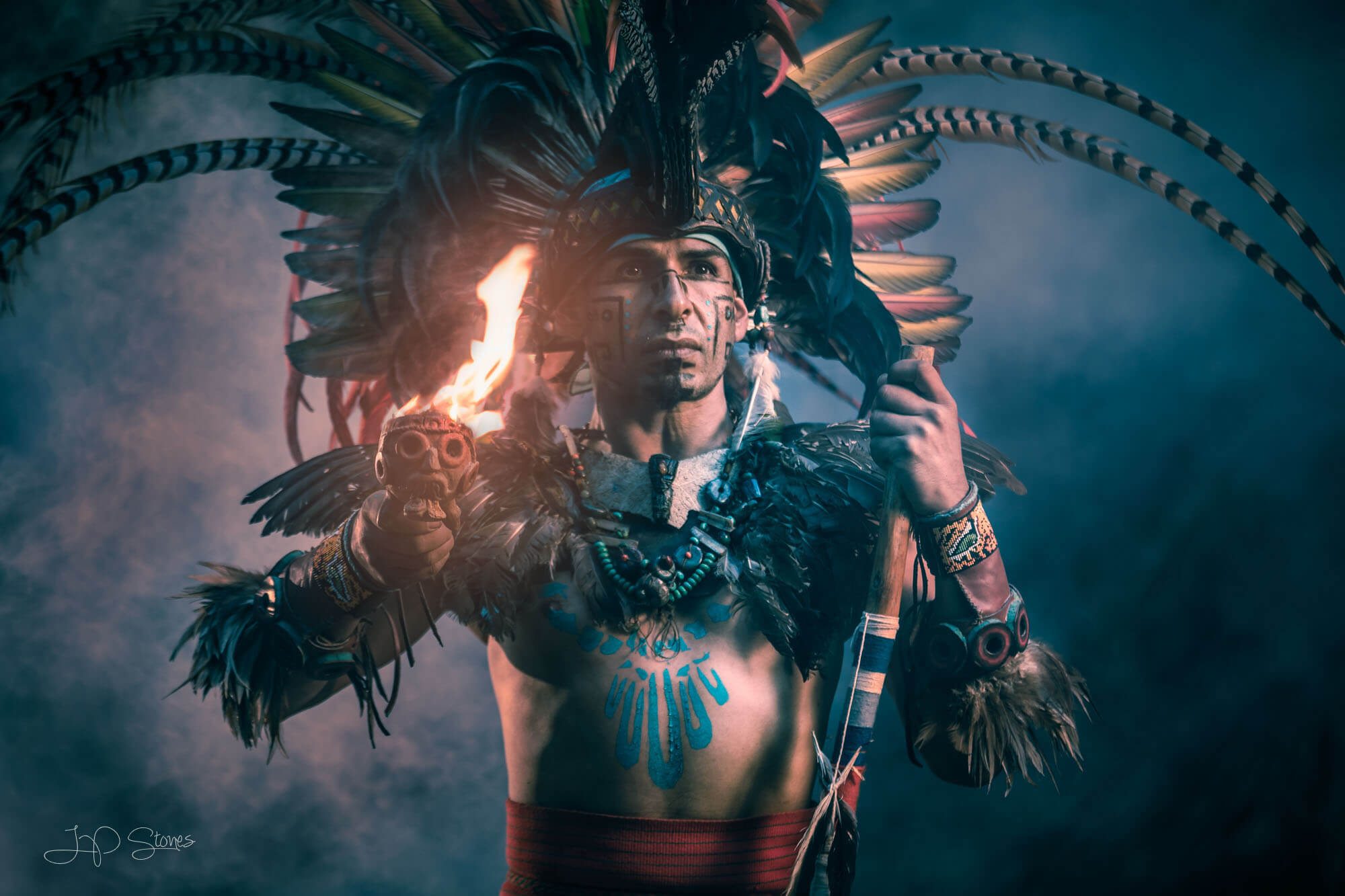
I started photographing the Mexica Concheros, about 5 years ago now. As I got to know them better, I learned how connected the Mexica are to their mythology. To the stories passed down across generations. Stories that, in some cases, were conceived thousands of years ago.
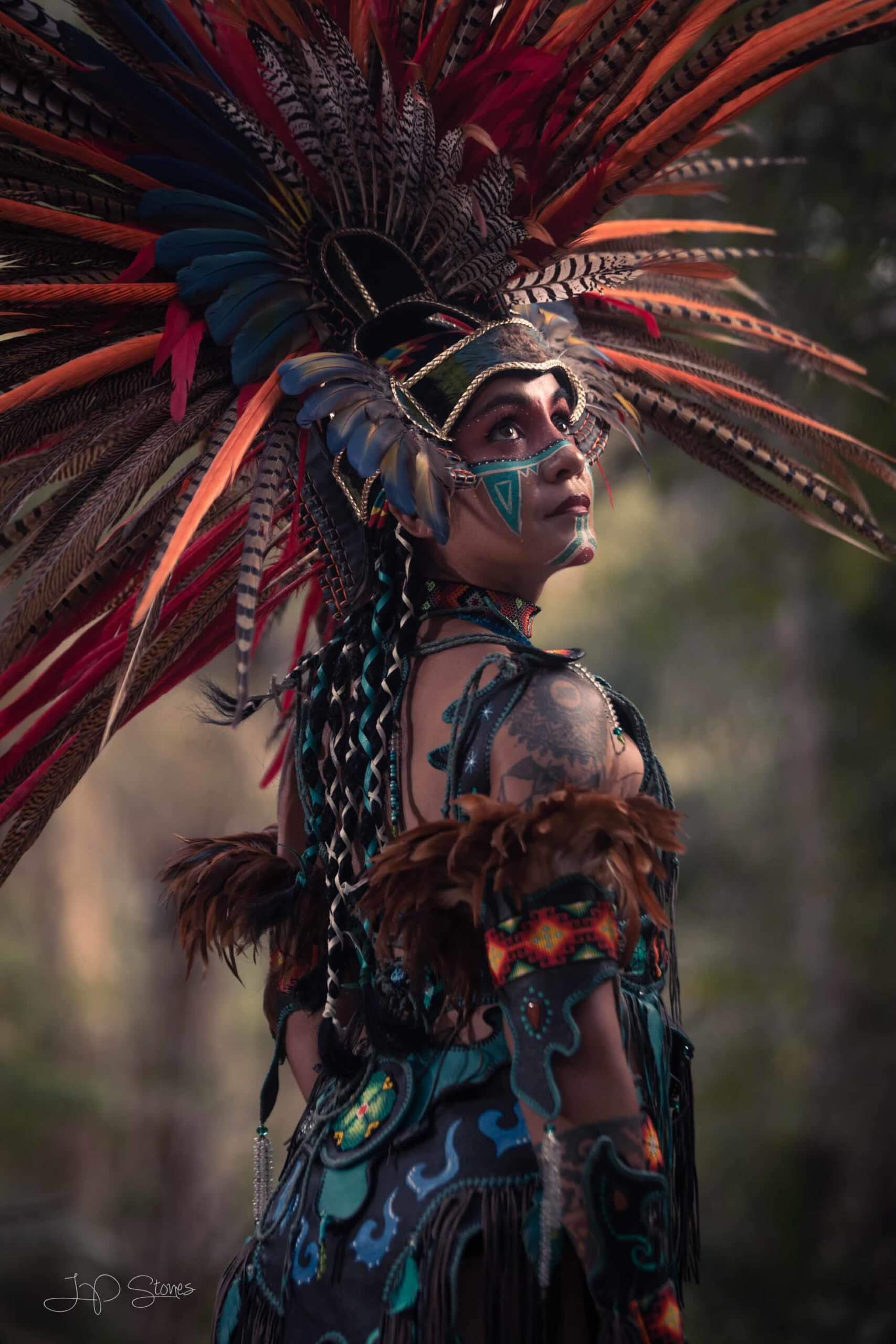
I decided that if these stories were so important to Mexica culture, they needed to play a bigger role in the portraits we were making. I think that’s where the inspiration for this series really started.
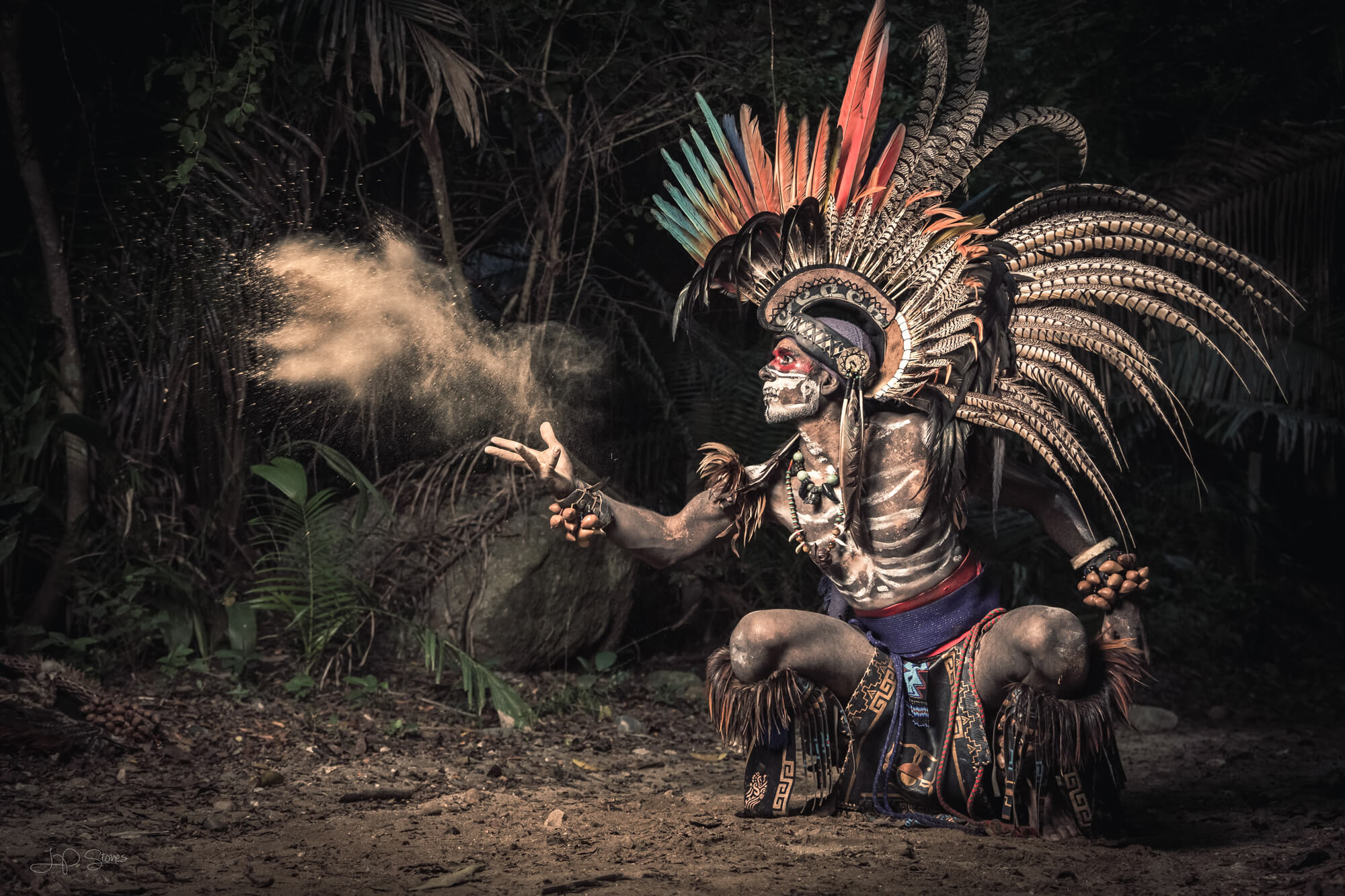
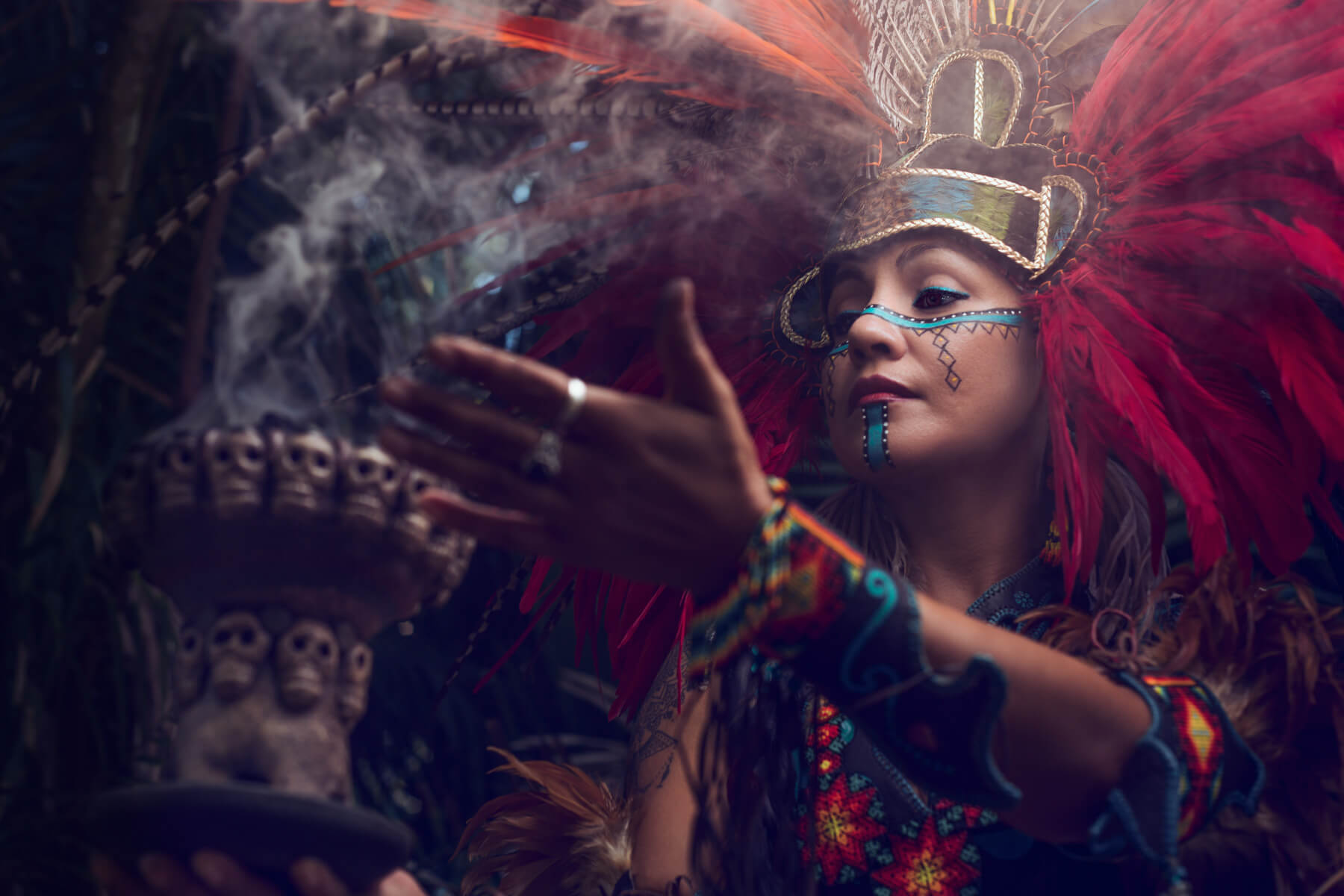
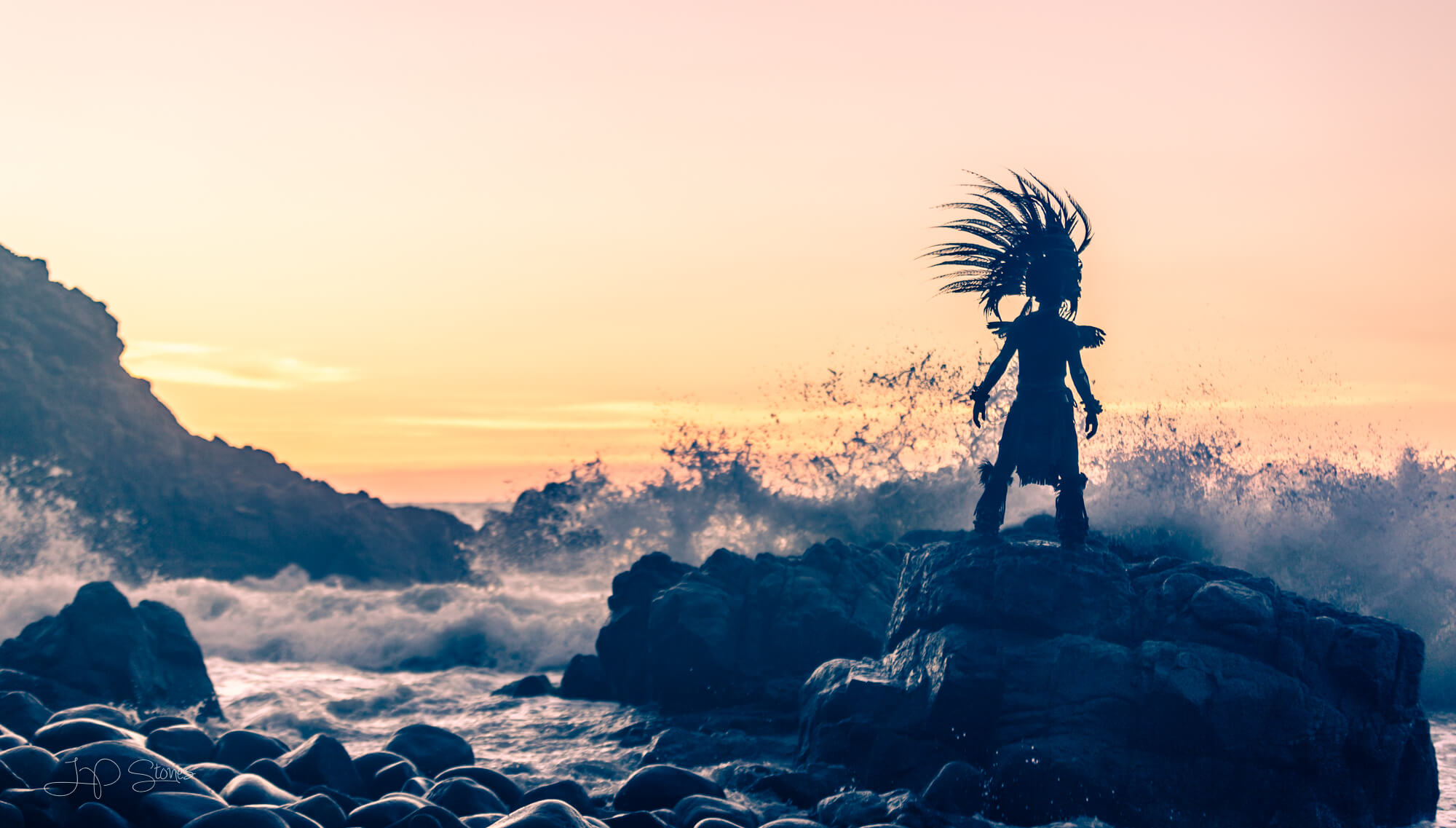
People have reacted to these photos in beautifully unexpected ways. Five people have decided to ink one onto their skin. Every few months, someone sends me a photo out of the blue. And it will be a 20-foot version of one of these portraits on the side of a building. We’re up to six murals now. They just keep popping up all over Mexico. It’s kinda awesome.
Also, I found out there is a bikie gang with a photo I took sewn into their jackets. This reaction might have something to do with the narrative style I’ve been using in these photos. I hope so, because then I have a theory about it….
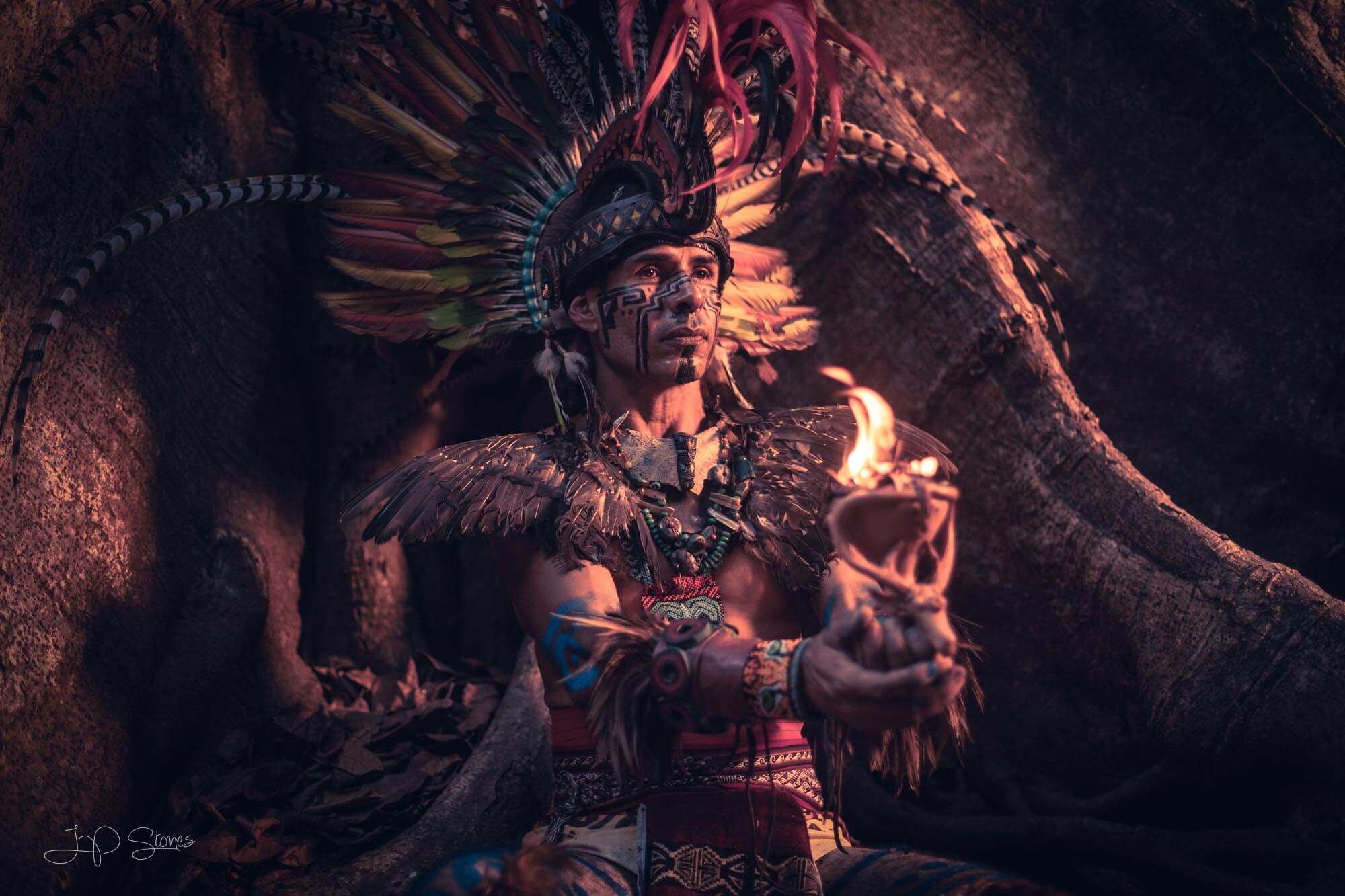
My goal as a photographer is for my photos to connect with people on an emotional level. To make them feel something. And I think that’s easier for someone to make that connection if the photo has a narrative style. Humans are story-seeking animals. We’re addicted to creating fictions. As a result, we need very little prompting to infer narrative into any situation. And, I think my photos invite that process. They are shot in this cinematic photography style so they feel like they’re part of a narrative, part of a story.
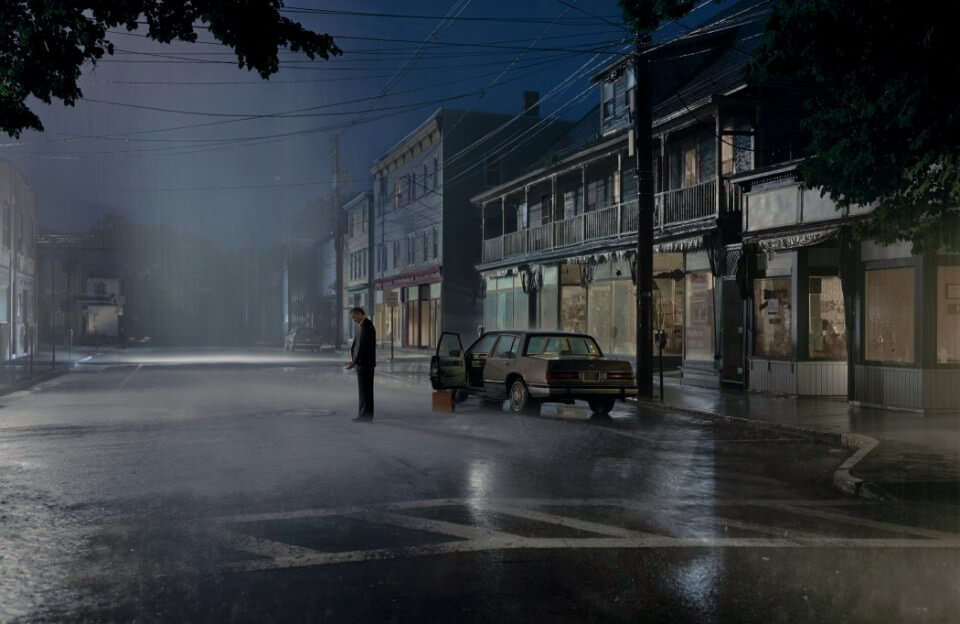
Gregory Crewdson is amazing at using this technique. When I first saw one of his photos I couldn’t help but fabricate my own narrative around it. I wanted to live inside the photo for a moment to try and understand what’s happening in it. In short, his photos definitely trigger the fiction centre in my brain!
What is the biggest challenge in these cinematic photography portraits?
Often, it’s the logistics that slow us down. I tend to want to use a lot of stuff when I shoot. A couple of smoke machines, a bunch of strobes with their stands, and a drone for the BTS footage. Add in the Conchero’s regalia and props and that’s a lot of gear to carry into whatever jungle location we’ve settled on.
The photos below, we call it Mexica Battle, is a good example. We had a whole car’s worth of gear to carry to the top of this hill though 2 kilometres of jungle. Worth it though, even though you can barely see the location through the smoke!
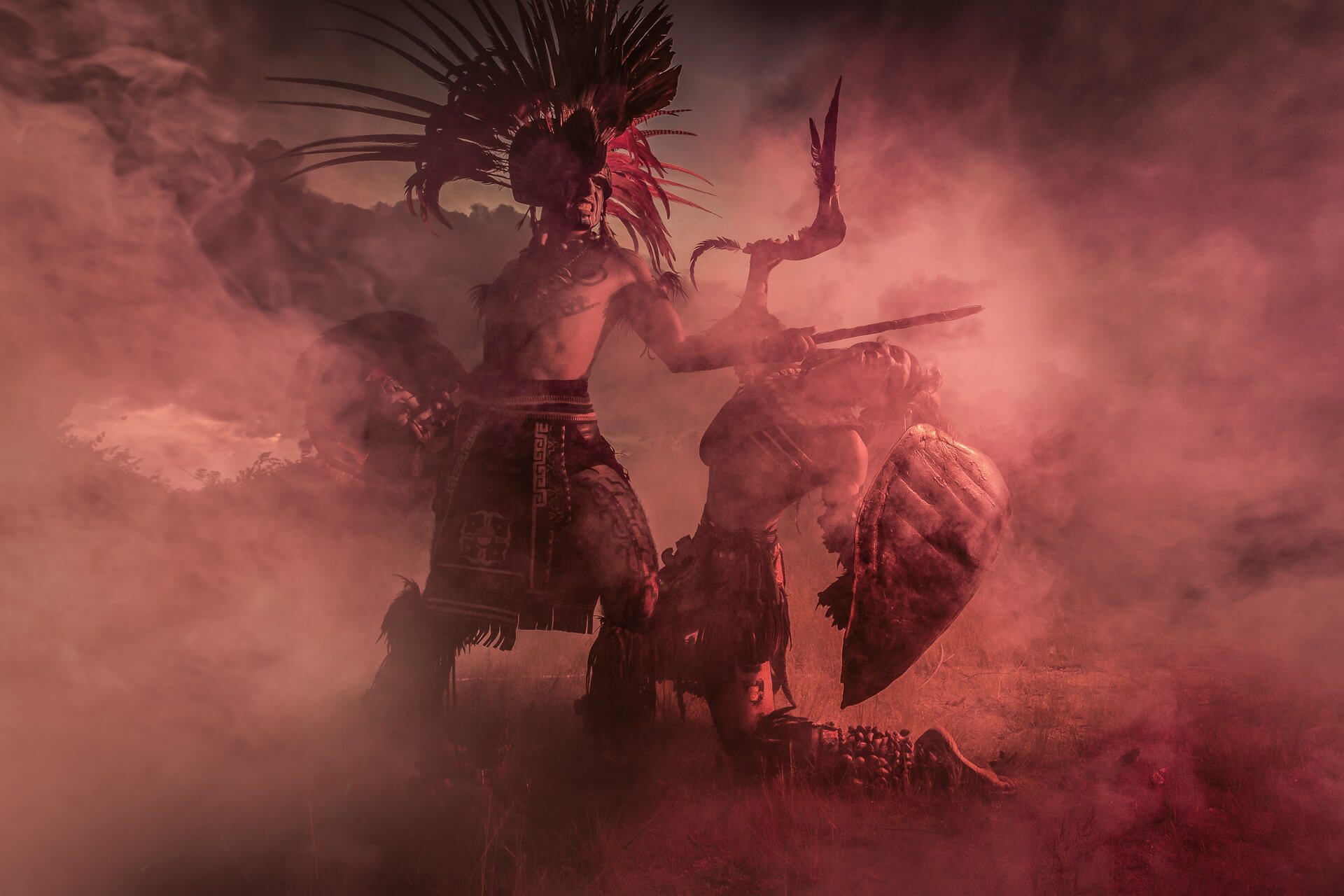
For cinematic photography shoots like this, I’ll need 2 or 3 extra pairs of hands to help with everything. Getting all those people together on tiny budgets can be challenging. But all the practice has made me a much more efficient event planner. Which is useful when you host photography workshops!
To make sure I maximise the number of images, my photoshoots are like military operations. Me and Dan, who helps me with the photoshoots, will do up to three tests before we work with models: to make sure we’re ready.
On photoshoot day, I’ll have prepared shot lists with a running order, with start and end time, light setups, poses, alternative angles. Everyone knows what we’re doing and we can get through 10 different light setups on a 4 hour shoot. I used to be happy if I got 3 or 4 photos.
What cameras, lenses and lighting gear were used to create this cinematic photography series?
The Mexica series spans a few years now and, over that time, I’ve played around with the equipment we take into the shoots. Most importantly, I’m looking for the most options with the lowest weight. Again, for reasons mentioned earlier.
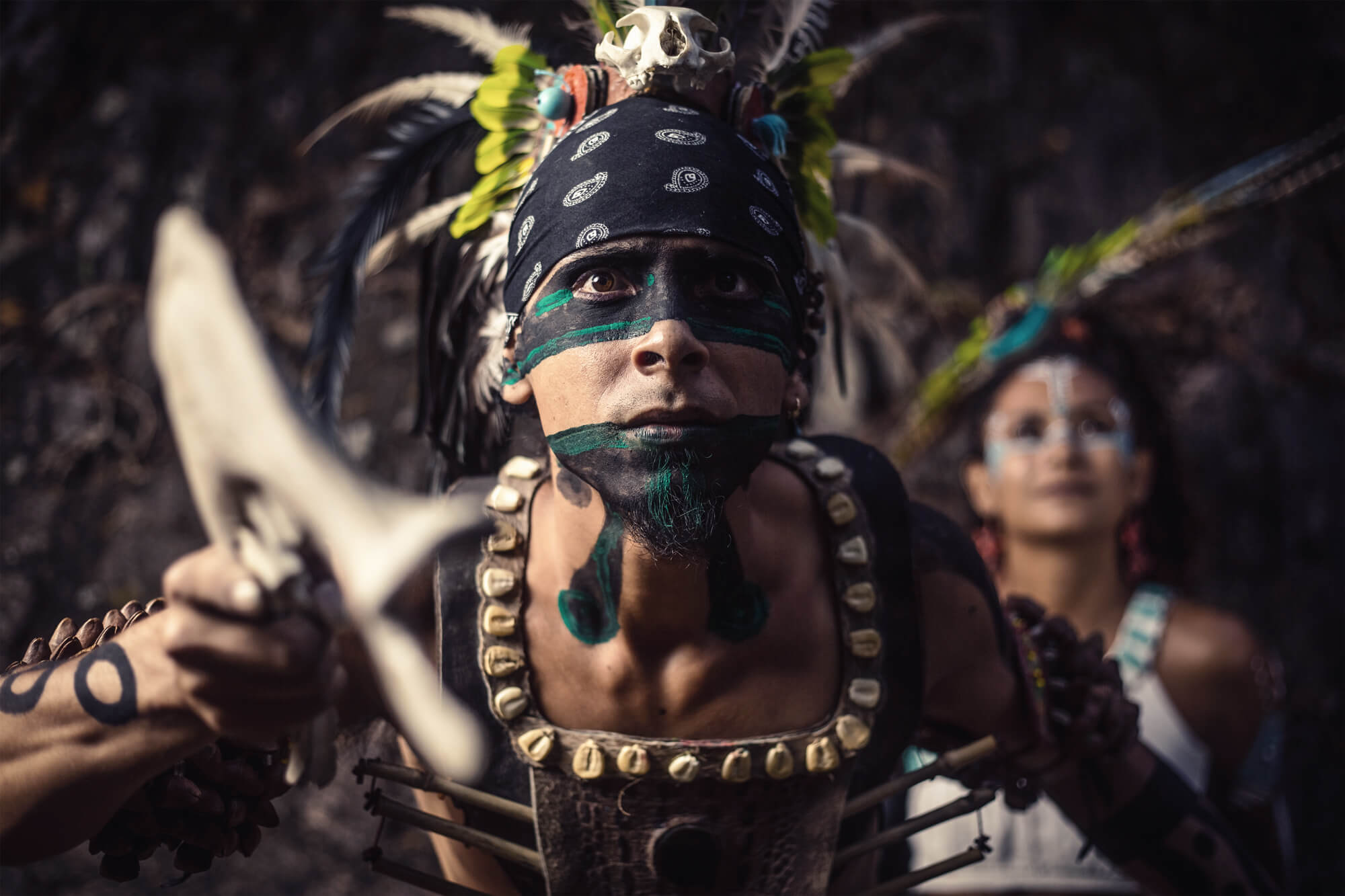
Lighting Gear
I used to shoot with speedlights a lot because they are so light, but having to deal with all those batteries and synch issues eventually drove me nuts. Now, I use battery-powered strobes, ranging from the nifty Godox AD300 (300 watt) strobes, to the heavier but bright-as-hell Godox AD600s (600 watt).
I couldn’t create these photos with natural light. The window of good light is just too short for the amount of I cram into a photoshoot. For instance, we normally shoot for about 4 hours. The lights enable me to recreate that golden hour look whenever and wherever I want to.
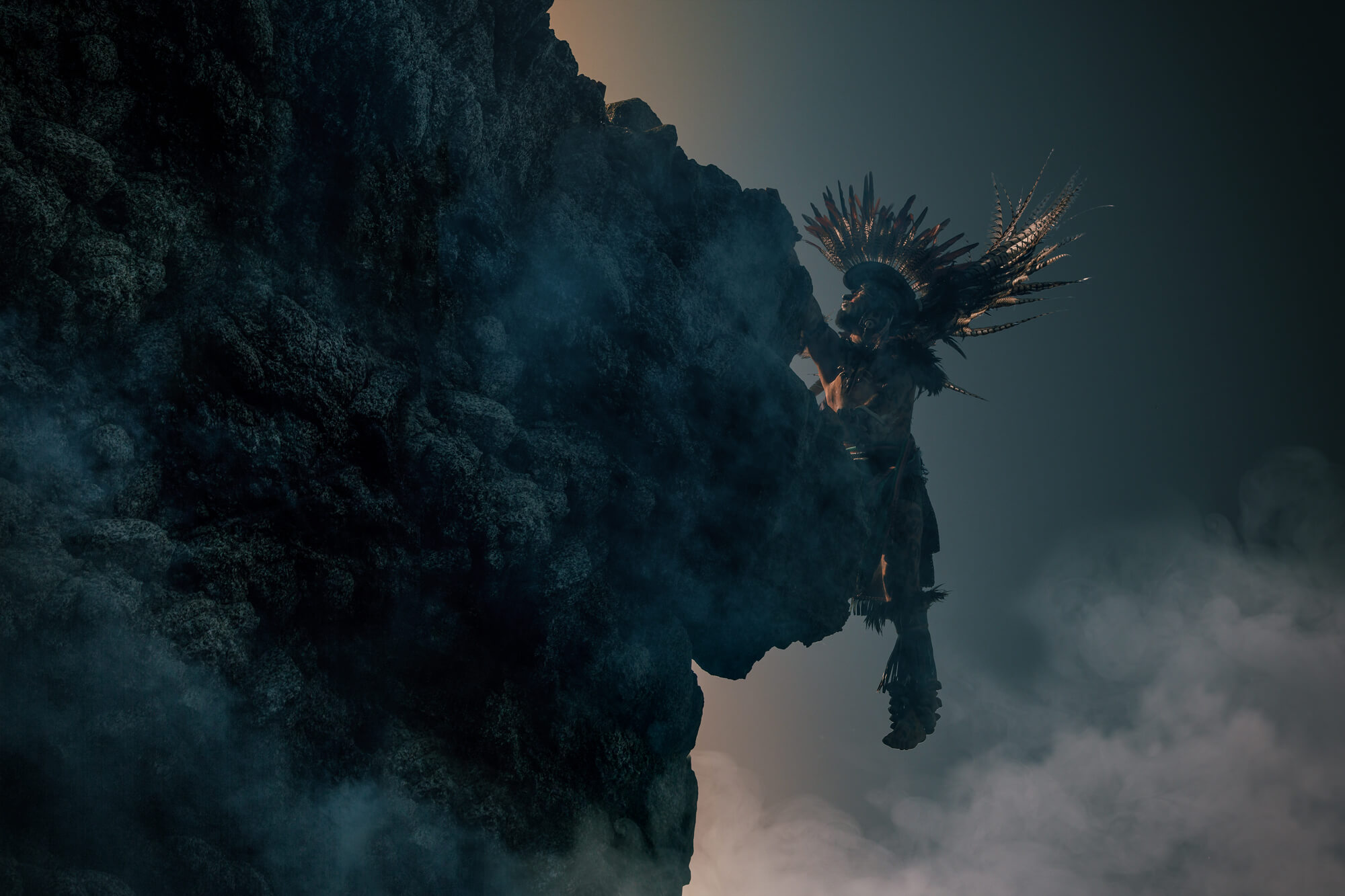
Camera
I use a Canon 5D4 these days because I’m used to Canon and I’m kinda invested in the lens system now. But the camera to me is just a tool. I’m not that bothered about the bells and whistles. I just need it to be tough and durable as it gets thrown about a bit. I slipped, after the below photo and the camera took a dunk. It actually survived!
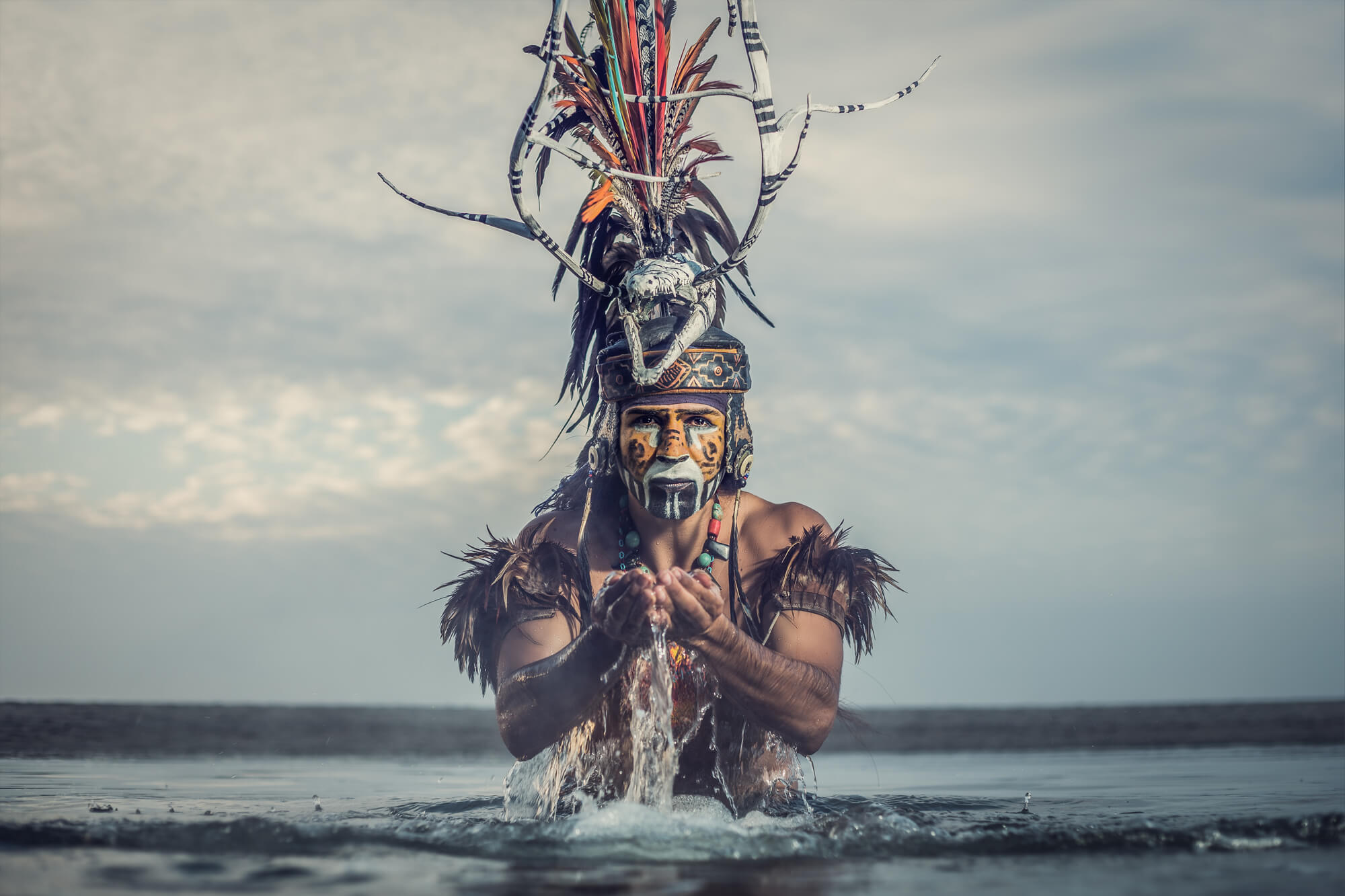
Lenses
Lens choice plays a huge part in the final look of a photo. So I like to cover the entire focal range with good zoom lenses. I have a 16-35 mm f/2.8 lens and a 70-200mm f/2.8 lens. I also have some prime lenses that go as wide as I can afford: a 35mm, a 50mm, and an 85mm.
My current favorite is the 70-200 mm. It’s heavy to carry around, but it’s worth it.
I change my lenses based on concepts, but also based on the seasons. The jungle in Nayarit is gorgeous in the rainy season. But by July it’s mostly dried out. To keep shooting outdoors I move up the focal range, from a wide to a telephoto. I can then take photos that include less vegetation making it easier to frame that one one spot what is still green.
Atmosphere
I regularly use atmospheric effects in my photos like fire, smoke, water because that atmosphere serves a few different purposes.
For example, it can be great to add drama into a scene.
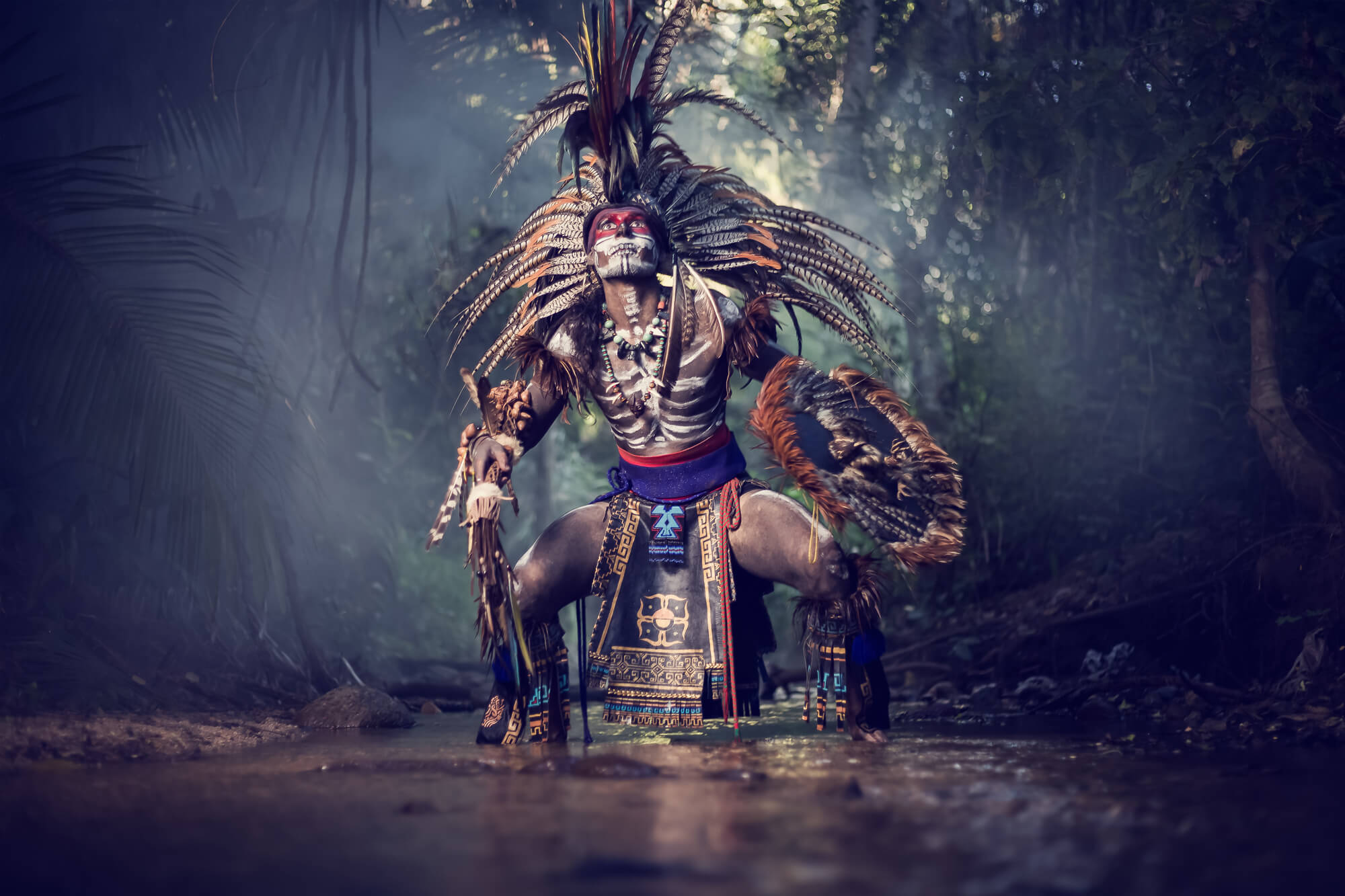
But it’s also a great tool to hide a background that isn’t helping your composition.
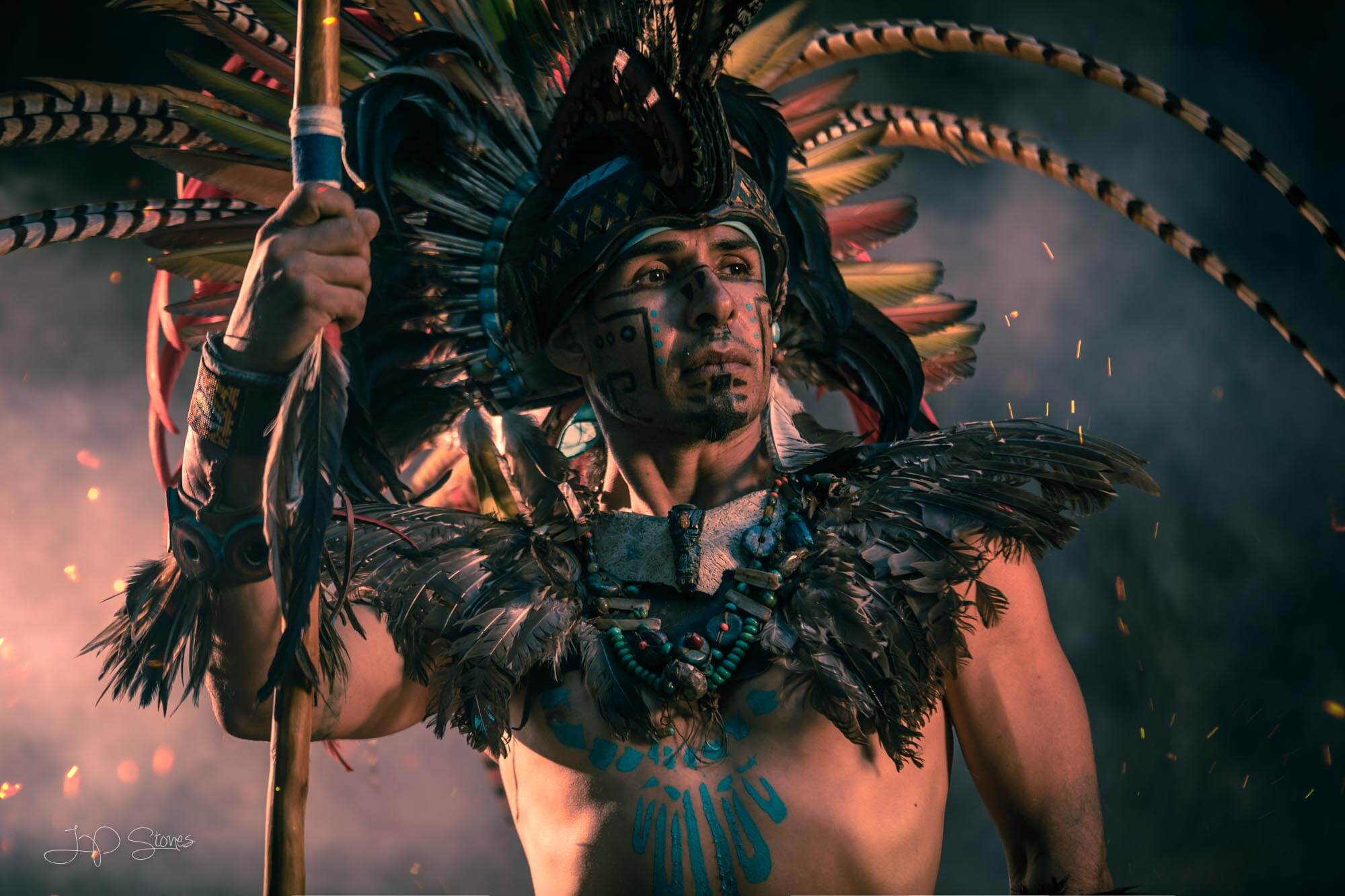
I use a range of smoke machines, from small 400 W machines to the larger 1200 W machine used in concerts. That one is fun! Recently, we jerry-rigged one to be gas-powered, which means we can use it in the jungle where there is no AC power!
Do you have a favorite photo from the series? If so, what is it and why?
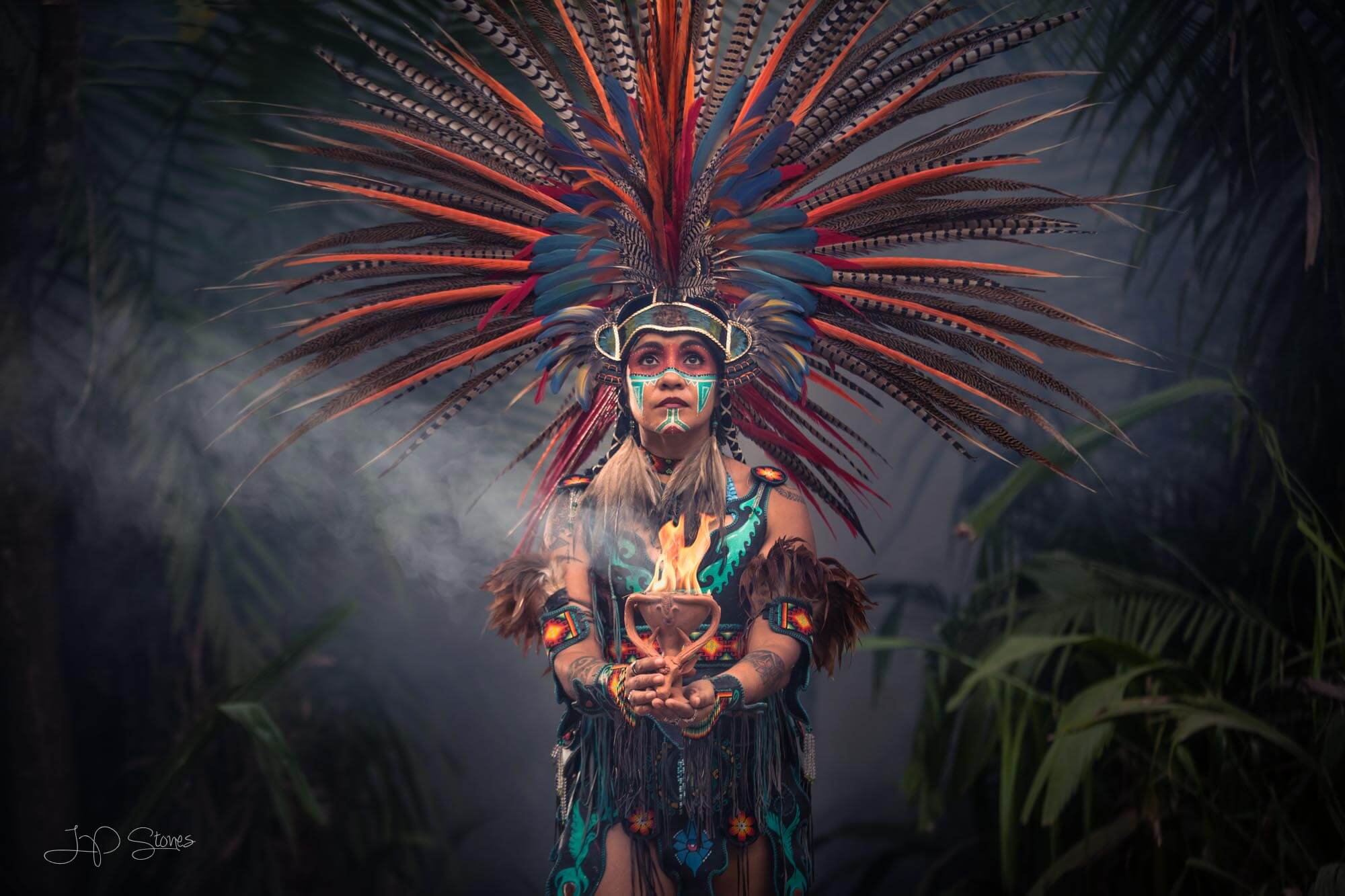
At the moment, I like the above image, which we took a few days back. I was hosting a private workshop, and this was one of the new concepts we were trying out. I love the subject separation in it. We shot in front of a dry river bed so there was a tunnel of vegetation we could smoke out. Consequently, the smoke is what makes the model pop out from the image. Below, you can find the test shot for this concept. The test shot made me realise it would work better with different lighting and, consequently, a slightly wider frame. I love it when a test shot evolves into a final image!
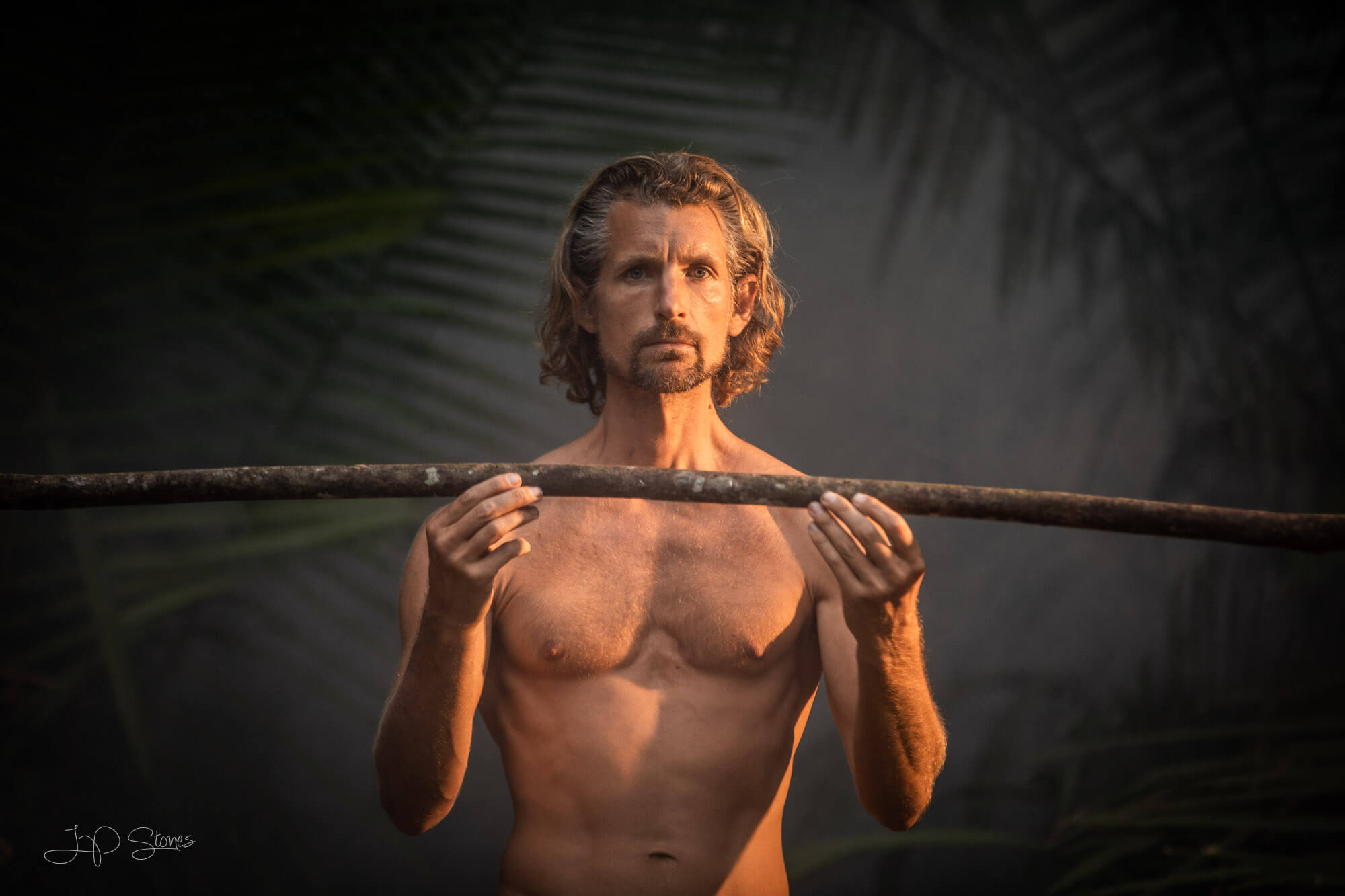
For photographers looking to create impactful cinematic photography like this, could you share your process of coming up with your concepts and ideas?
My process is probably a bit unusual because I have Aphantasia. To clarify, it’s a spectrum disorder that impairs your mind’s eye. Basically, when I close my eyes, I can’t visualize images. That has some implications on my photography and, as a result, I think my planning process differs from other photographers.
To try and get around this limitation, I spend a lot of time analyzing images that capture my attention, including photo stills from movies, paintings, and so on. Basically, I document anything I find visually interesting.
For instance, I’ll scribble over them, highlighting the geometry, pose, light setup, and the mood it evoked in me. I have hundreds, probably thousands, of these screenshots on my laptop. The act of intellectually processing the image’s DNA seems to be enough so that I can call on it when I’m creating my own work. As a result, I don’t need to visualize what something might look like. I can just remember my notes and recall what I liked and how it was set up and then decide if it works for this.
What are you currently working on? What’s next?
I’m working on a couple of personal projects at the moment. The one I’m most excited about is with some Lucha Libre wrestlers in Mexico City. I’m hoping to build on what I learned from a recent photoshoot with two local fighters.

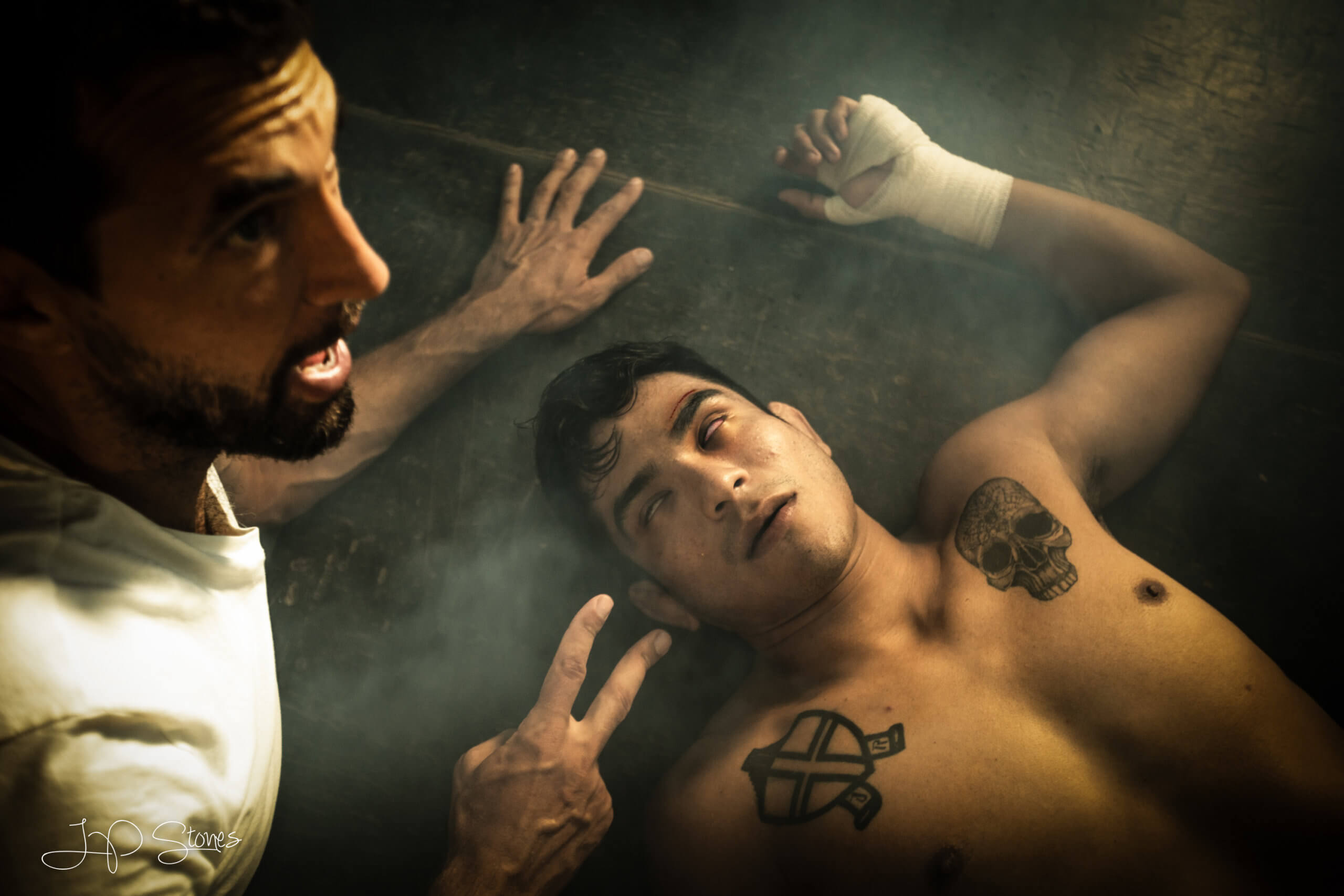
About JP Stones
JP Stones is English, but he’s lived in Mexico for close to a decade now. He takes cinematic portraits of the people and traditions that shaped Mexico’s fascinating culture. He also teaches photography workshops and says things like “the essence of a country lies within its people & traditions, not just its photogenic landmarks.”
You can find JP’s work in the following places:
If you’re looking for additional inspiration for your own portraiture, don’t miss this collection of 32 outstanding examples of portrait photography.
